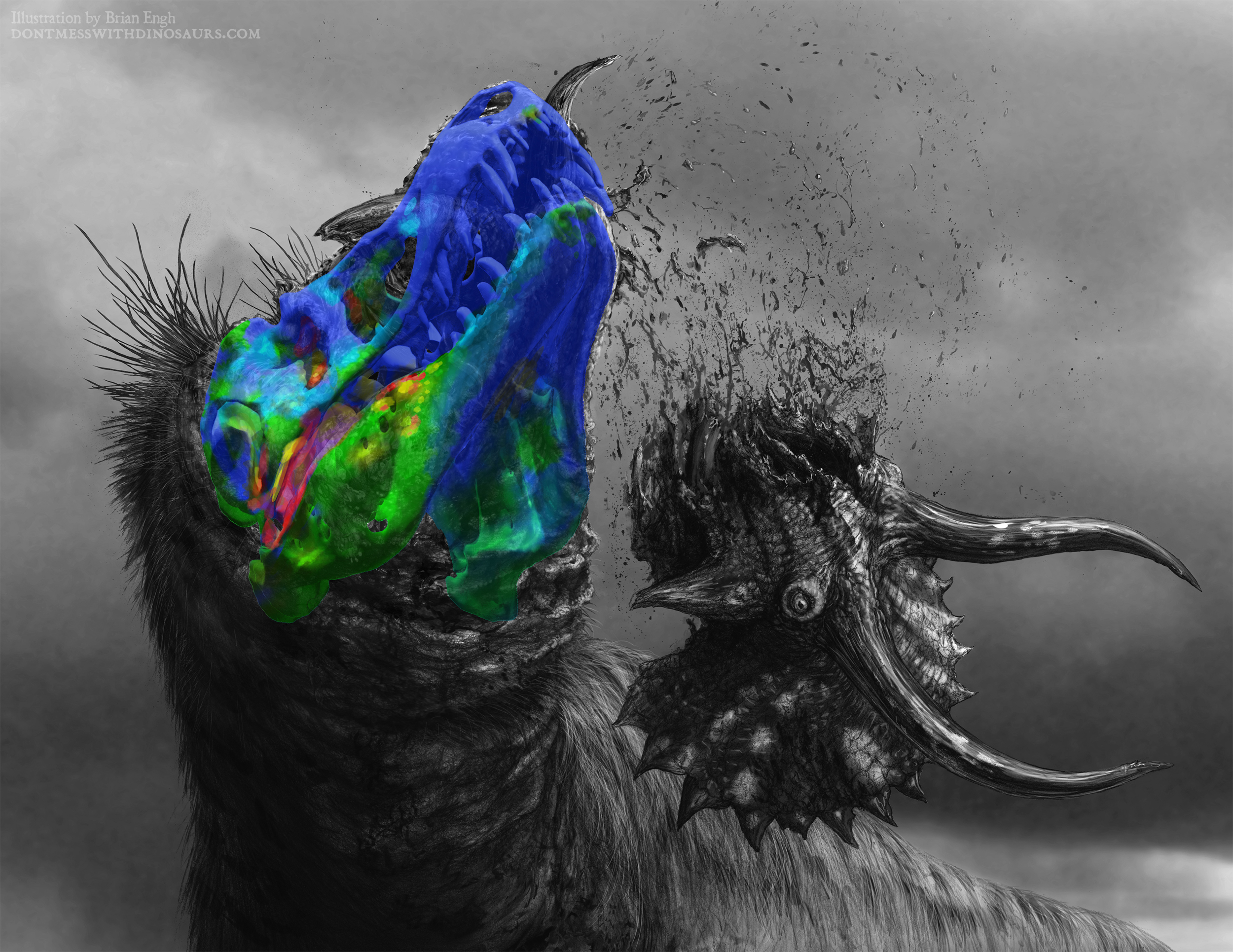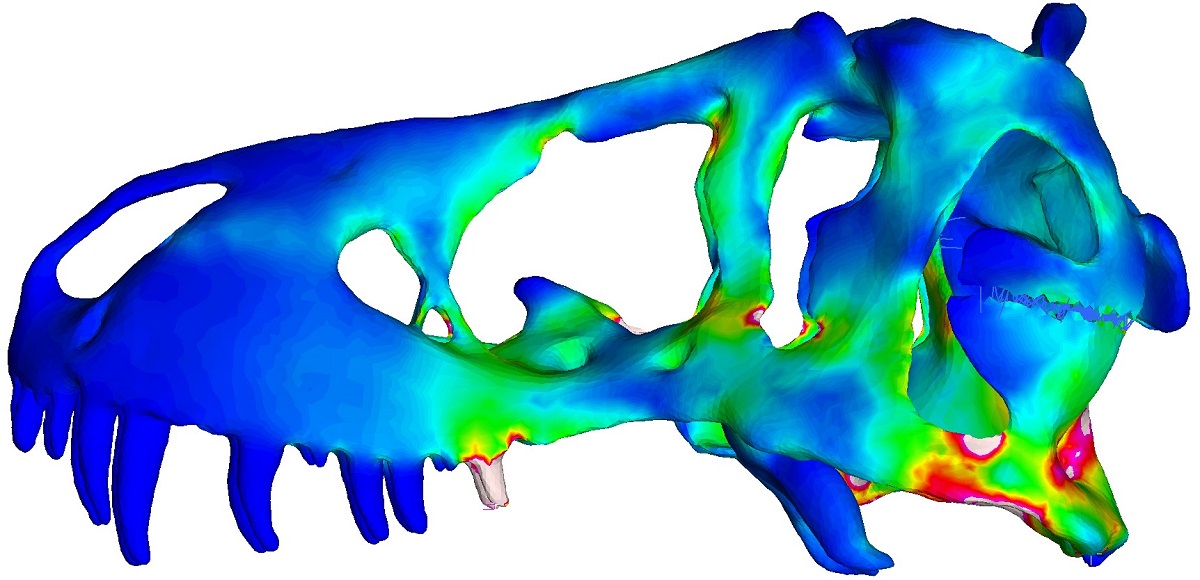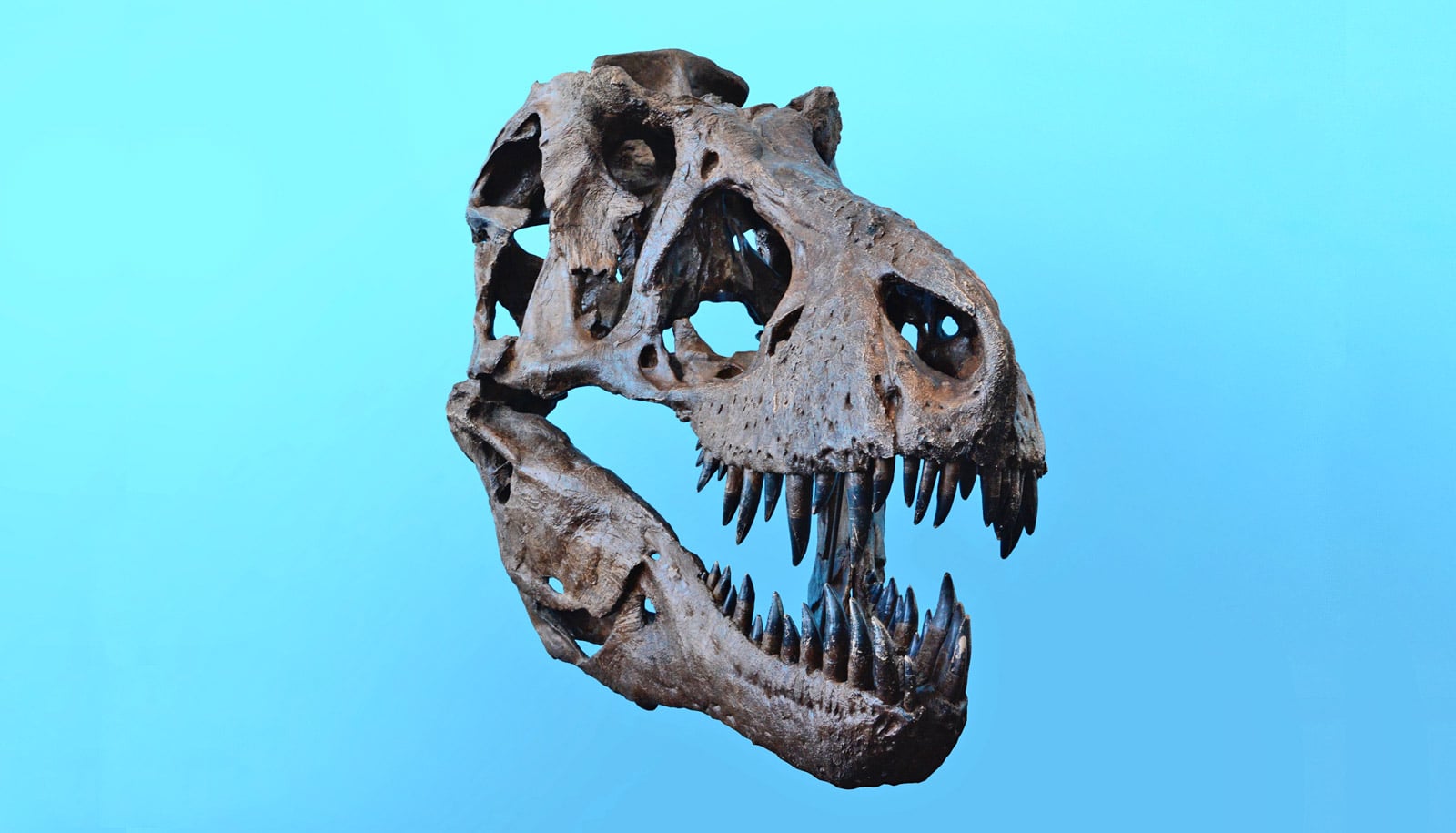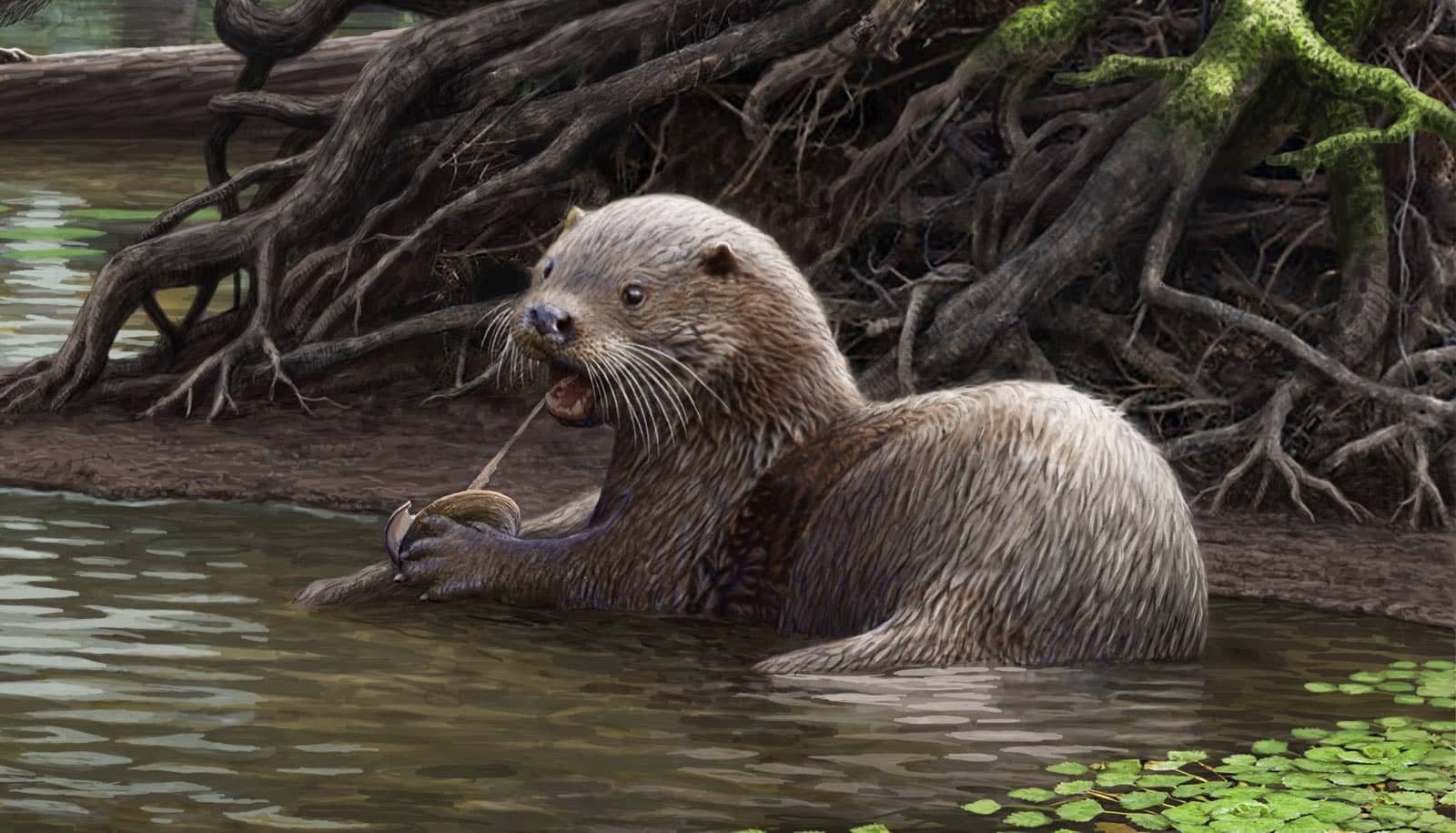Tyrannosaurus rex skulls were stiff like those of hyenas and crocodiles, not like those of snakes and birds, research suggests.
T. rex could bite hard enough to shatter the bones of its prey. But until now, how it accomplished this feat without breaking its own skull bones has baffled paleontologists.
“The T. rex had a skull that’s 6 feet long, 5 feet wide, and 4 feet high, and bites with the force of about 6 tons,” says Kaleb Sellers, a graduate student in the University of Missouri School of Medicine.
“Previous researchers looked at this from a bone-only perspective without taking into account all of the connections—ligaments and cartilage—that really mediate the interactions between the bones.”

Chewing mouths
Using a combination of imaging, anatomy, and engineering analysis, the team observed how the roof of the mouth of the T. rex reacted to the stresses and strains from chewing by applying models of how two present day relatives of T. rex—a gecko and a parrot—chew to how the T. rex skull worked.
“Dinosaurs are like modern-day birds, crocodiles, and lizards in that they inherited particular joints in their skulls from fish—ball and socket joints, much like people’s hip joints—that seem to lend themselves, but not always, to movement like in snakes,” says Casey Holliday, an associate professor of anatomy.
“When you put a lot of force on things, there’s a trade-off between movement and stability. Birds and lizards have more movement but less stability. When we applied their individual movements to the T. rex skull, we saw it did not like being wiggled in ways that the lizard and bird skulls do, which suggests more stiffness.”

Human jaws
In addition to helping paleontologists with a detailed study of the anatomy of fossilized animals, researchers believe the findings can help advance human and animal medicine by providing better models of how joints and ligaments interact.
“In humans, this can also be applied to how people’s jaws work, such as studying how the jaw joint is loaded by stresses and strains during chewing,” says lead researchers Ian Cost, an assistant professor at Albright College and a former doctoral student in the University of Missouri School of Medicine.
“In animals, understanding how those movements occur and joints are loaded will, for instance, help veterinarians better understand how to treat exotic animals such as parrots, which suffer from arthritis in their faces.”
The paper appears in The Anatomical Record. Additional coauthors are from the Medical Center for Birds, Ohio University, the University of Southern Indiana, and the University of Missouri.
The National Science Foundation, the Jurassic Foundation, the Missouri Research Council, the Missouri Research Board and the University of Missouri pathology and anatomical sciences department funded the work. The content is solely the responsibility of the authors and does not necessarily represent the official views of the funding agencies.
Source: University of Missouri

